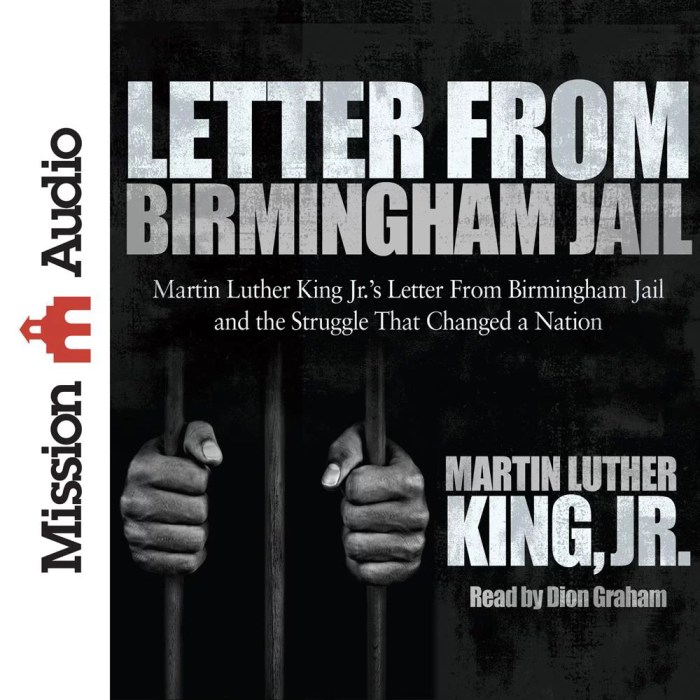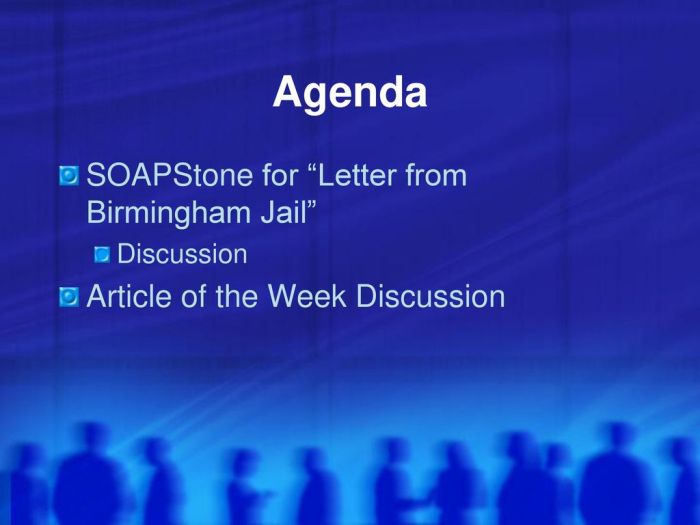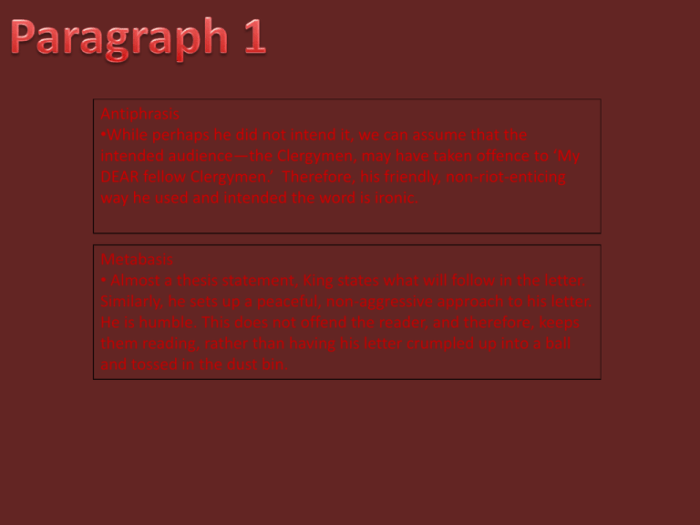Soapstone for letter from birmingham jail – In his seminal “Letter from Birmingham Jail,” Martin Luther King Jr. employs the evocative imagery of soapstone to symbolize both the oppressive nature of Birmingham’s racial segregation and the indomitable spirit of the city’s protesters. Through this multifaceted metaphor, King underscores the urgent need for nonviolent resistance and the moral imperative of addressing racial injustice.
The opening paragraph should provide a concise overview of the topic and establish the importance of soapstone imagery in King’s letter.
Soapstone as a Metaphor for the Stone of Birmingham
King’s use of soapstone as a metaphor for Birmingham’s racial segregation highlights the city’s unyielding resistance to change. He draws parallels between the hard, unyielding nature of soapstone and the city’s entrenched segregationist policies. In one passage, King writes, “Just as the soapstone cannot be broken, so the segregationist cannot be moved by reason or persuasion.”
Soapstone as a Symbol of Resistance: Soapstone For Letter From Birmingham Jail

The soapstone in the letter also represents the resilience and determination of the Birmingham protesters. King highlights the unyielding spirit of the demonstrators, comparing them to the enduring qualities of soapstone. He writes, “The soapstone will not break, and the protesters will not give up.”
Soapstone and the Importance of Nonviolent Resistance

King’s use of soapstone imagery reinforces his belief in nonviolent resistance. He argues that nonviolent protests, like the soapstone that cannot be broken, can ultimately lead to social change. In one passage, King writes, “The soapstone will not break, and neither will the spirit of nonviolent resistance.”
Soapstone and the Call for Justice

The soapstone in the letter serves as a reminder of the urgent need for justice and equality. King uses the soapstone imagery to emphasize the moral imperative of addressing racial injustice. He writes, “The soapstone will not break, and neither will the demand for justice.”
Question Bank
What is the significance of soapstone in King’s letter?
Soapstone symbolizes the oppressive and unyielding nature of Birmingham’s racial segregation, as well as the resilience and determination of the protesters.
How does King use soapstone imagery to reinforce his belief in nonviolent resistance?
King argues that nonviolent protests, like the soapstone that cannot be broken, can ultimately lead to social change.
What does the soapstone represent in terms of the call for justice?
The soapstone serves as a reminder of the urgent need for justice and equality, emphasizing the moral imperative of addressing racial injustice.